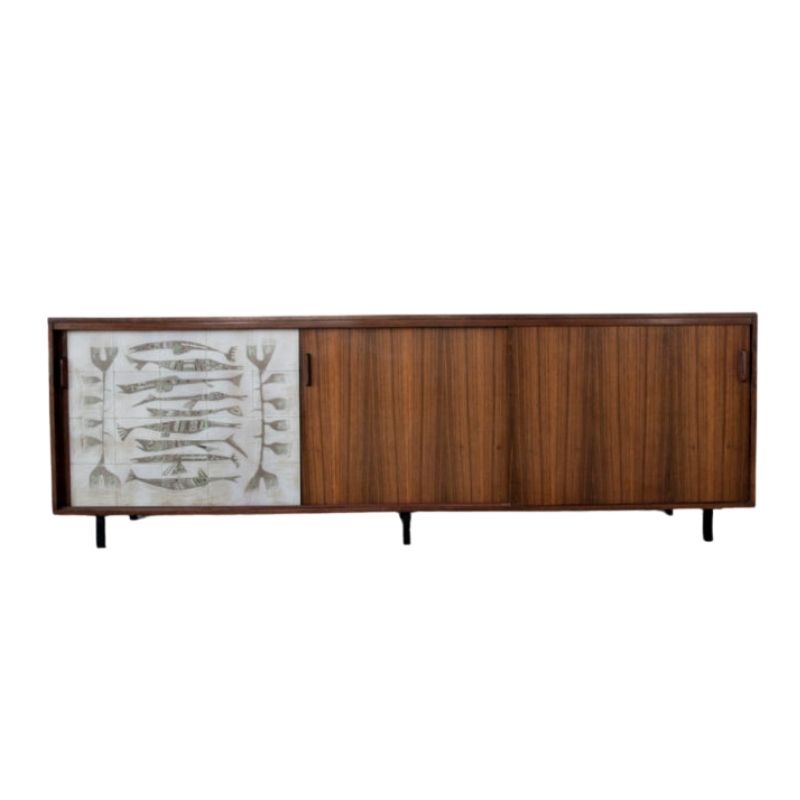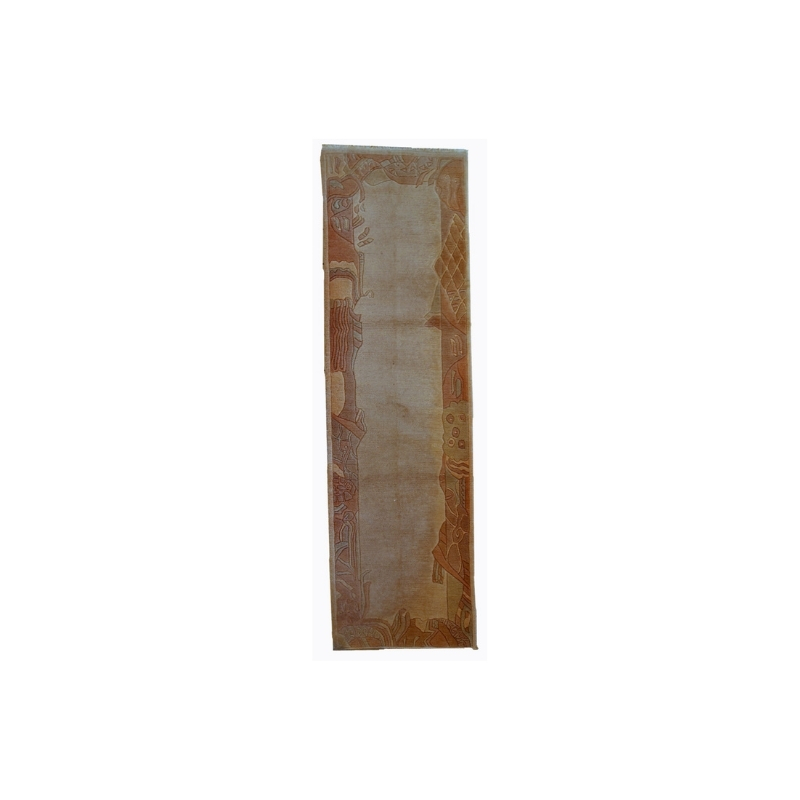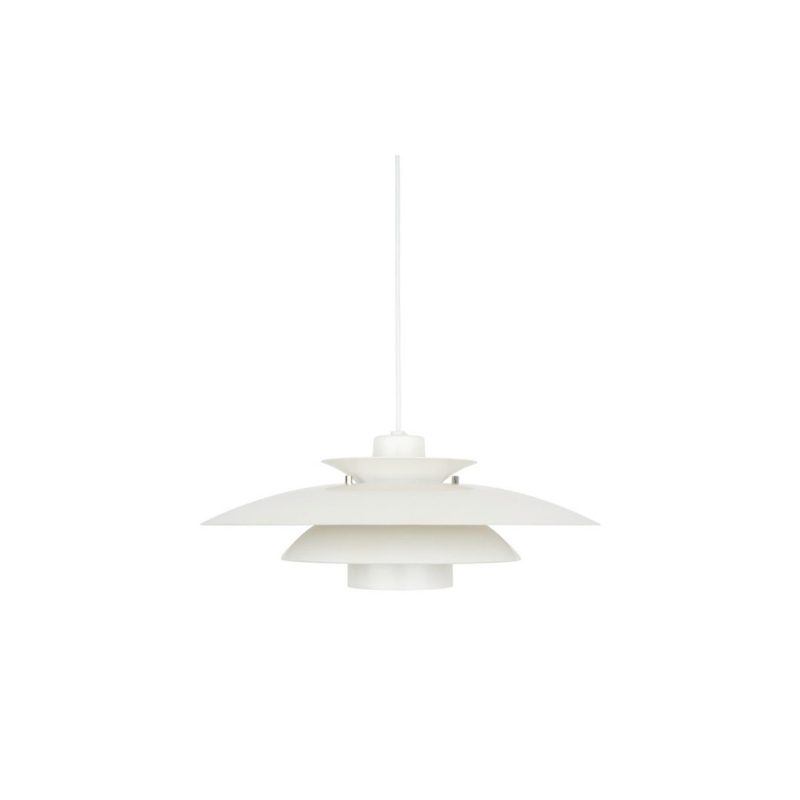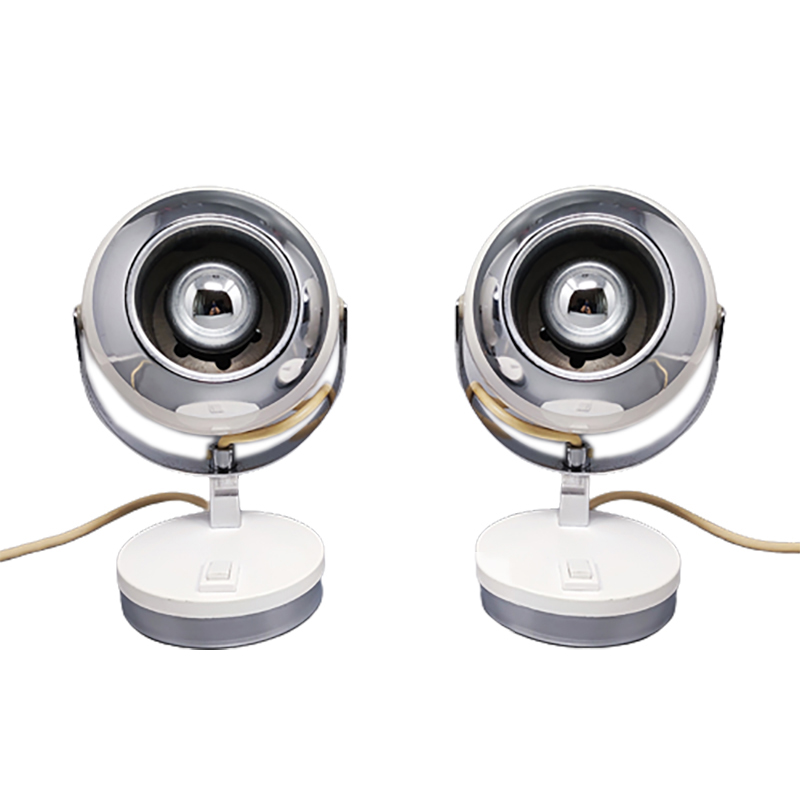My take
It's admittedly a subtle change but I think it has the effect (as long as it's kept very subtle) of easing the formality. A subtle relaxing of the geometry gives it a barely perceptable illusion of being hand made and makes it feel, even if you don't actually notice the variations, more natural. I like it.
Vase Comparison Side by Side by Sondheim, er, de Winter
First version...
Second Version...
I thought we needed to see them side by side, er, one on top of the other.
The first version is bold and unambiguous. There is symmetry between top and bottom, or at least scalar self-similarity between top and bottom.
The second version is bold and ambiguous. A circular base composed of hexagons evolves upward into a hex top composed of hexagons. It plays a trick on the eyes tracking up that forces the mind to ask what is happening to the senses here? The premise of the base evolves unexpectedly into the top.
I have to vote for the first version, but I am very intrigued intellectually with the second version.
The reason I opt for the first one is it feels more satisfying and balanced. It also progresses, or maybe just continues, formally in an obviously logical fashion from base to the fresh and so somewhat surprising hex grate on top.
But the formal ambiguity (I can't think of a better word description) of the second version--the utterly unexpected formal progression from round bottom to hex top--may be more fitting and truthful for the zeitgeist of our time...maybe for all time. Things are never working out the way one expects and the logic of things seems always to be evolving in unforeseeable, but not necessarily illogical ways, once one digs beneath the apparent chaos to find the logical dynamics driving eventualities. In this sense, the second phase fulfills its premise; its just that our senses don't expect this kind of formal logic to play out this way.
Some surprise is good, if it does not distract from and imbalance the overall beauty of an object. Put another way, if the subtleties of the formal progression preoccupy you or leave you unsatisfied, the subtleties doing the preoccupying have to go.
I suppose it comes down to whether you you like some mind games in your aesthetics, or just like aesthetics unadulterated with mind games. There is something to be said for both approaches. All form and no mind games make Jack a dull artist and Jack's art dull art work. But too much mind gaming makes Jack an artist not successfully balancing his thinking and his senses and so imbalancing the formal integrity of his artifact.
Vase Comparison Side by Side by Sondheim, er, de Winter Pt. 2
This time I vote with the slightly more predictable earlier version, because in the end I think it is better balanced and yet fresh enough to avoid being unchallenging.
And yet I can surely understand the appeal the second version holds for others. As usual, James' ideas and their effects on aesthetics run far deeper than one at first suspects they will. They are very challenging and point to a contemporary sensibility that design should embrace IMHO. I am just not sure it works better in this particular case.
But then, to be bluntly honest, I am not as sophisticated about and saturated with aesthetics, as most of you are, and so it probably takes a bit less to please and engage me.
I guess what I am stammering about here is this: I think the second version embodies a truly contemporary sensibility, and I want it to work, because I want us to generate an artifact that is both totally present AND yets seems to have been present for ever, but I am not sure that this quite does it this time.
the last detail... A vs B
There is some conversation here and I think it's an important issue. So let me elucidate my opinion. The first design I designate version A.
It is what the mind wants this object to be. It's the natural evolution of a concept. Perfect geometry, simple, rigid. To my EYE that creates a problem. It IS the correct intellectual evolution of the concept, but it stumbles when it meets my eye. Instead of absorbing the whole form it gets distracted by the perfection, the absolute geometric correctness of the form. It's like the issue with creating a complex curve on paper that looks natural to the eye. The most recent version I call B.
It holds the perfect geometry on the top, but emerges from a base where the geometry has been relaxed a bit (maybe a bit too much). My first sight of it is not distracted by blazingly precise geometry.
I see the complete object and THEN I notice the geometric concepts from whence this design emerged.
I find the perfect geometry of version A a wee bit harsh and hard edged. I prefer B but perhaps a little less "relaxed".
But then what the frick do I know, I've designed lets see now 1 table and 1 dog fence. Hmmm not an impressive track record. This is the sort of detail I think we need input from the professional about???
If you need any help, please contact us at – info@designaddict.com









